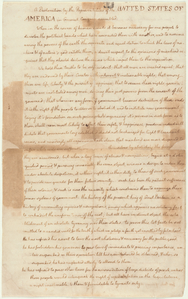The Invention of Rewriting Revision?

Fehrman says that Hannah Sullivan’s The Work of Revision posits that “revision as we now understand it—where authors, before they publish anything, will spend weeks tearing it down and putting it back together again—is a creation of the 20th century.”
More specifically, she argues that approach to rewriting is a product of the typewriter, cheaper typesetting, and word-processing programs. In days when paper and printing were rarer resources, authors didn’t see so many versions of their work and therefore took fewer opportunities to rewrite.
Yet the article omits some counterexamples. It cites John Milton’s “Lycidas” as an example of a writer making “local tweaks instead of significantly recasting.” It doesn’t mention that Milton issued Paradise Lost in two forms, the first divided into ten books and the second into twelve, as he revised his work. Alexander Pope published three versions of The Rape of the Lock within a decade.
Fehrman says Sullivan cites the Romantics as a school that “made resisting revision a virtue. The best literature, they believed, flowed from spontaneous and organic creative acts.” Yet no great English poem was more fussed over and rewritten (not always to good effect) than William Wordsworth’s verse autobiography, posthumously published as The Prelude.
The Work of Revision doesn’t appear to go deep into English literary history, or to find the same trends in the literature of other languages where the same typesetting technologies applied. The catalog copy names only Modernist authors, contrasted with a nameless swarm of “Romantics,” and the earliest name in the table of contents is Henry James.
It might be more accurate to say that the Modernists, in contrast to their immediate literary predecessors, talked a lot more about revision, and about what hard work it was. And that would be significant in how they, and we, think about art. But are writers really driven more to revise now, or do we just see and hear about it more often?


1 comment:
I wonder if the crucial technology behind this perceived change isn't the typewriter but coal furnaces and toilets. We may not have older authors' manuscripts because after scribbling all over those papers they reused them to light fires or wipe their bums.
Just think of the number of nineteenth-century manuscripts said to have been lost, in whole or part, to housemaids starting fires with them. Those servants must have been in the habit of burning paper with writing on it.
Post a Comment